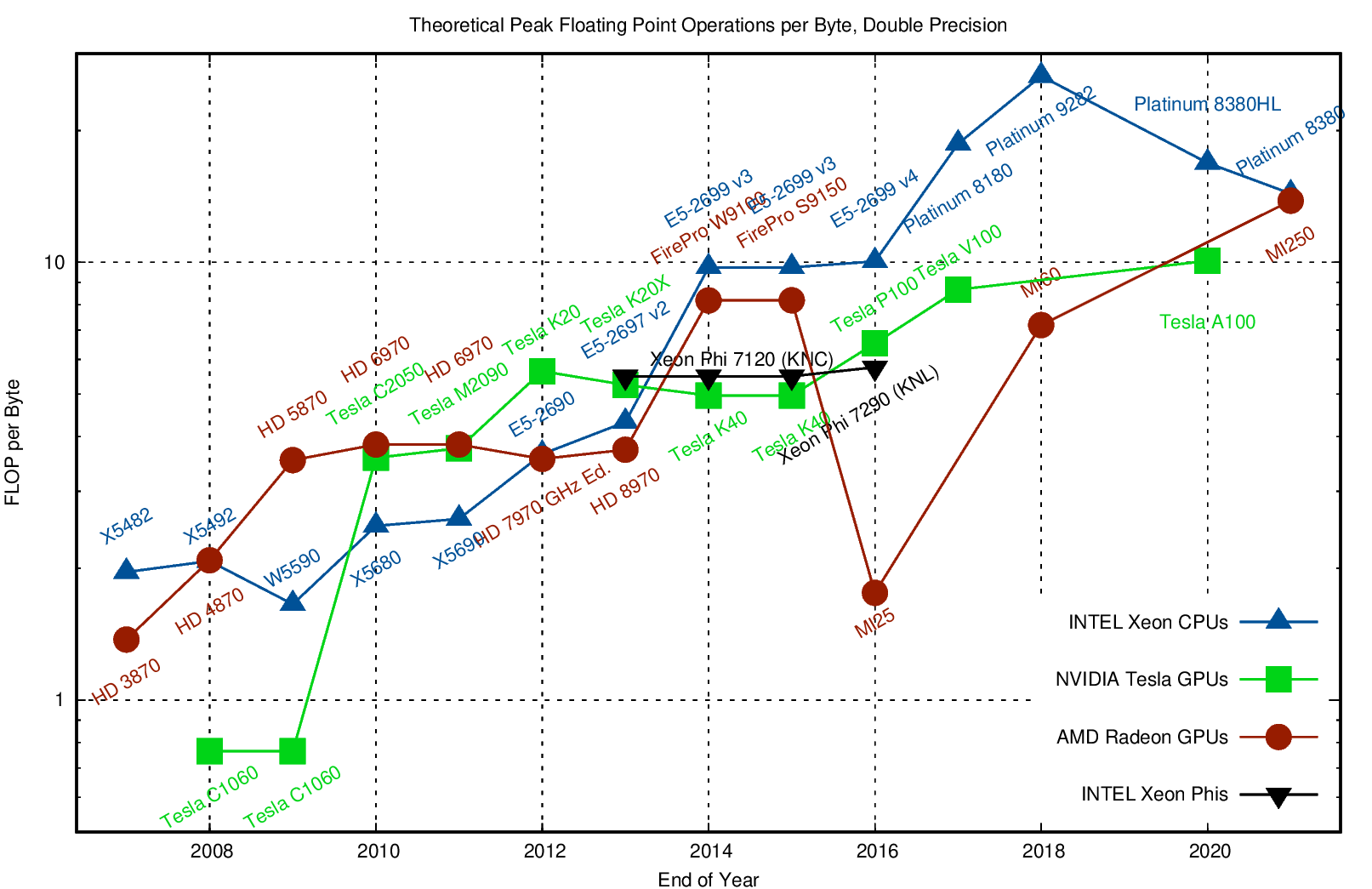2022-02-14 QR Factorization
Contents
2022-02-14 QR Factorization¶
Sahitya’s office hours: Friday 11-12:30
Last time¶
Revisit projections, rotations, and reflections
Constructing orthogonal bases
Today¶
Gram-Schmidt process
QR factorization
Stability and ill conditioning
Intro to performance modeling
using LinearAlgebra
using Plots
using Polynomials
default(linewidth=4, legendfontsize=12)
function vander(x, k=nothing)
if isnothing(k)
k = length(x)
end
m = length(x)
V = ones(m, k)
for j in 2:k
V[:, j] = V[:, j-1] .* x
end
V
end
vander (generic function with 2 methods)
Gram-Schmidt orthogonalization¶
Suppose we’re given some vectors and want to find an orthogonal basis for their span.
A naive algorithm¶
function gram_schmidt_naive(A)
m, n = size(A)
Q = zeros(m, n)
R = zeros(n, n)
for j in 1:n
v = A[:,j]
for k in 1:j-1
r = Q[:,k]' * v
v -= Q[:,k] * r
R[k,j] = r
end
R[j,j] = norm(v)
Q[:,j] = v / R[j,j]
end
Q, R
end
gram_schmidt_naive (generic function with 1 method)
x = LinRange(-1, 1, 10)
A = vander(x, 4)
Q, R = gram_schmidt_naive(A)
@show norm(Q' * Q - I)
@show norm(Q * R - A);
norm(Q' * Q - I) = 3.684346652564232e-16
norm(Q * R - A) = 1.6779947319649215e-16
What do orthogonal polynomials look like?¶
x = LinRange(-1, 1, 200)
A = vander(x, 6)
Q, R = gram_schmidt_naive(A)
plot(x, Q)
What happens if we use more than 50 values of \(x\)? Is there a continuous limit?
Theorem¶
Every full-rank \(m\times n\) matrix (\(m \ge n\)) has a unique reduced \(Q R\) factorization with \(R_{j,j} > 0\)¶
The algorithm we’re using generates this matrix due to the line:
R[j,j] = norm(v)
Solving equations using \(QR = A\)¶
If \(A x = b\) then \(Rx = Q^T b\).
x1 = [-0.9, 0.1, 0.5, 0.8] # points where we know values
y1 = [1, 2.4, -0.2, 1.3]
scatter(x1, y1)
A = vander(x1, 3)
Q, R = gram_schmidt_naive(A)
p = R \ (Q' * y1)
p = A \ y1
plot!(x, vander(x, 3) * p)
How accurate is it?¶
m = 30
x = LinRange(-1, 1, m)
A = vander(x, m)
Q, R = gram_schmidt_naive(A)
@show norm(Q' * Q - I)
@show norm(Q * R - A)
norm(Q' * Q - I) = 0.00043830040698919693
norm(Q * R - A) = 1.25091691161899e-15
1.25091691161899e-15
A variant with more parallelism¶
function gram_schmidt_classical(A)
m, n = size(A)
Q = zeros(m, n)
R = zeros(n, n)
for j in 1:n
v = A[:,j]
R[1:j-1,j] = Q[:,1:j-1]' * v
v -= Q[:,1:j-1] * R[1:j-1,j]
R[j,j] = norm(v)
Q[:,j] = v / norm(v)
end
Q, R
end
gram_schmidt_classical (generic function with 1 method)
m = 10
x = LinRange(-1, 1, m)
A = vander(x, m)
Q, R = gram_schmidt_classical(A)
@show norm(Q' * Q - I)
@show norm(Q * R - A)
norm(Q' * Q - I) = 6.339875256299394e-11
norm(Q * R - A) = 1.217027619812654e-16
1.217027619812654e-16
Cost of Gram-Schmidt?¶
We’ll count flops (addition, multiplication, division*)
Inner product \(\sum_{i=1}^m x_i y_i\)?
Vector “axpy”: \(y_i = a x_i + y_i\), \(i \in [1, 2, \dotsc, m]\).
Look at the inner loop:
for k in 1:j-1
r = Q[:,k]' * v
v -= Q[:,k] * r
R[k,j] = r
end

Counting flops is a bad model¶
We load a single entry (8 bytes) and do 2 flops (add + multiply). That’s an arithmetic intensity of 0.25 flops/byte.
Current hardware can do about 10 flops per byte, so our best algorithms will run at about 2% efficiency.
Need to focus on memory bandwidth, not flops.
